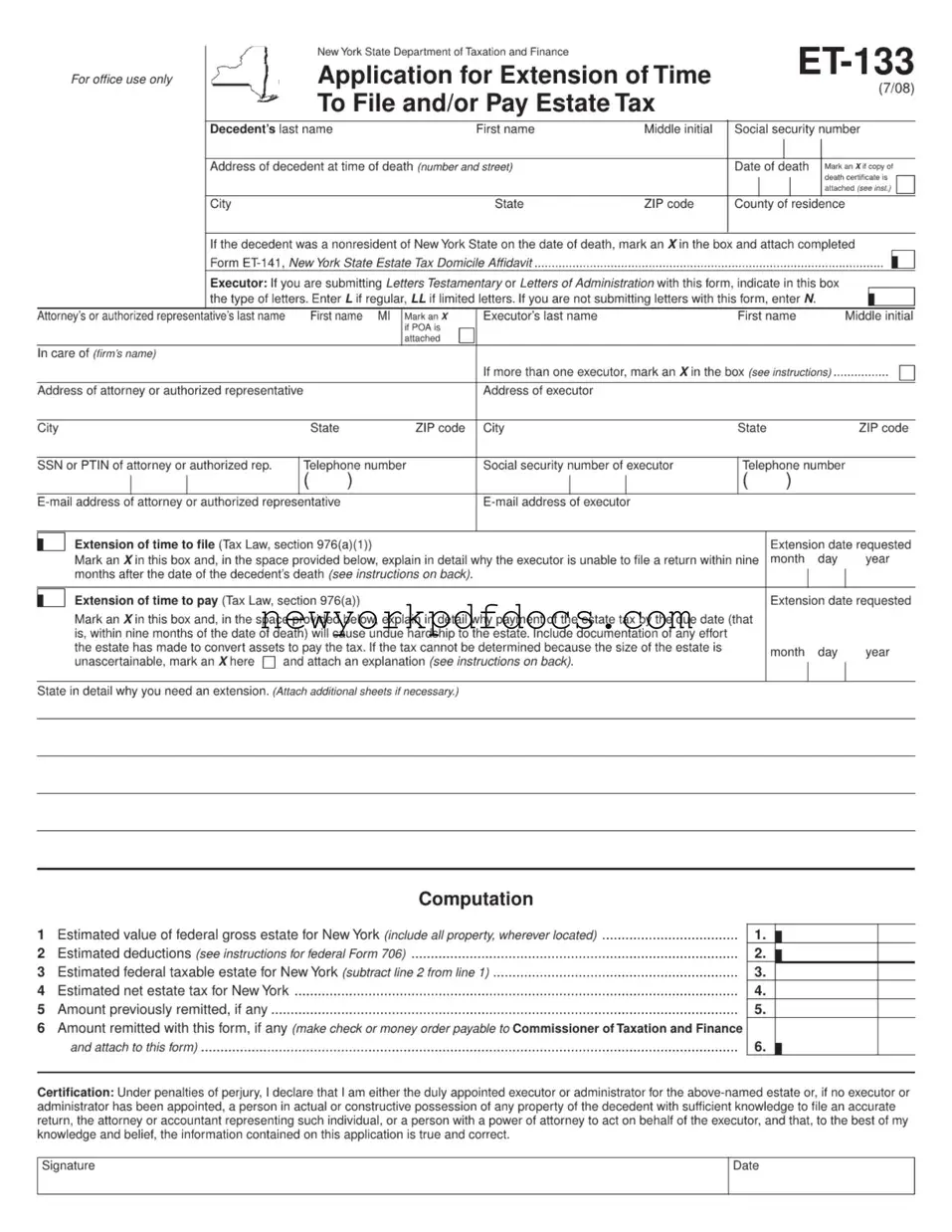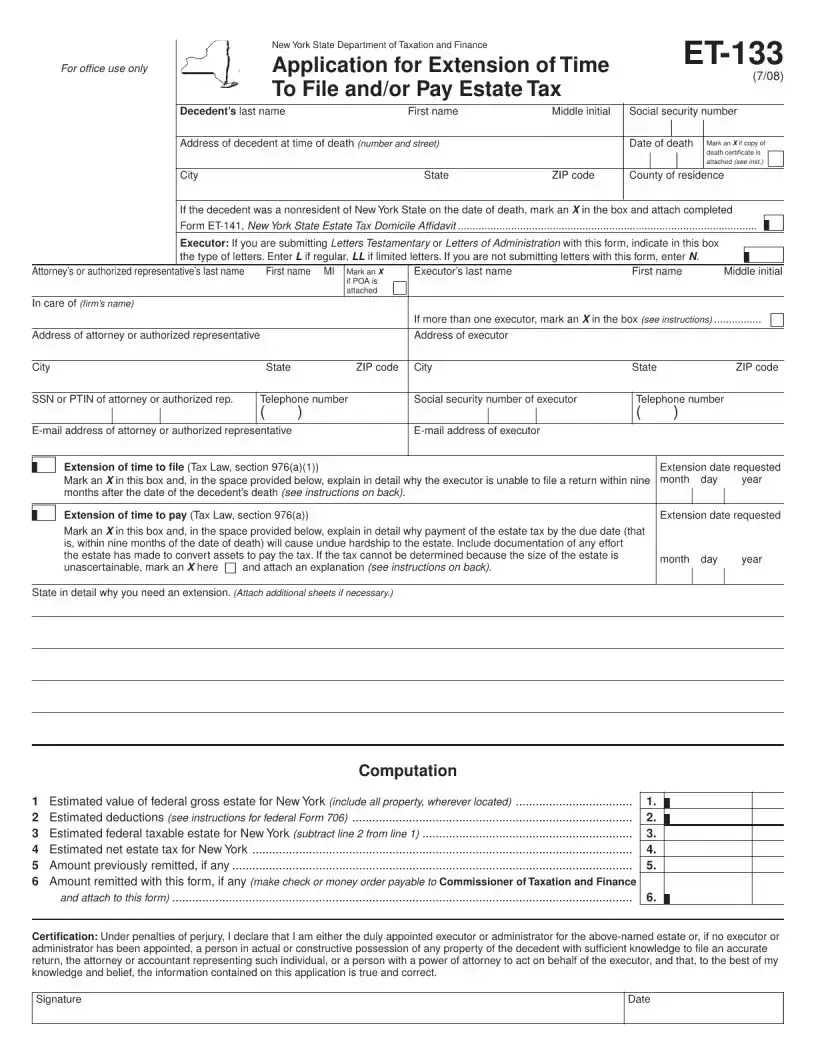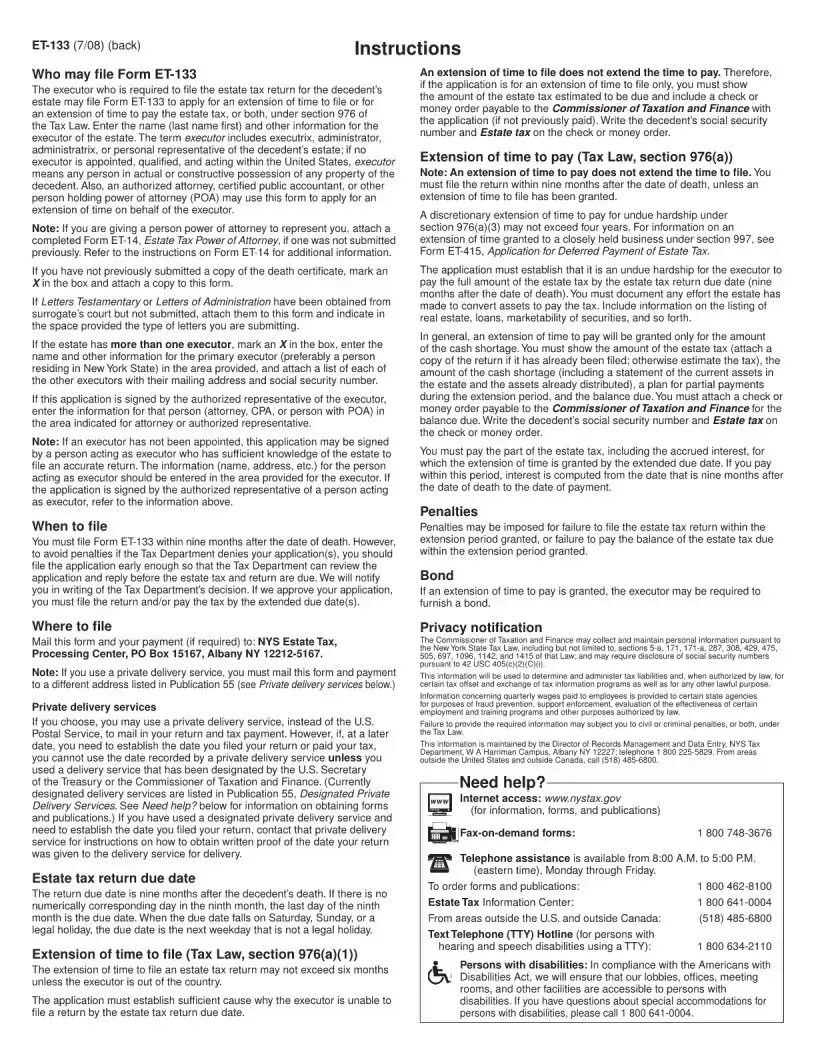The New York ET-133 form serves as a vital tool for executors of estates, allowing them to request an extension of time to file or pay estate taxes. This application is particularly important when circumstances make it difficult to meet the original deadlines set by the state. Executors must provide essential information about the decedent, including their name, social security number, and address at the time of death, as well as the date of death. If the decedent was a nonresident, additional documentation is required. The form also prompts executors to explain the reasons for their request for an extension, whether it be for filing or payment. This explanation must detail the hardships that would arise from adhering to the standard nine-month deadline. Furthermore, the ET-133 form allows for the inclusion of authorized representatives, such as attorneys or accountants, who can act on behalf of the executor. The form must be submitted within nine months of the decedent’s passing to avoid penalties, and it is crucial for executors to ensure that all necessary documentation, including death certificates and letters of administration, are attached to facilitate the review process by the New York State Department of Taxation and Finance. Understanding the nuances of this form can significantly ease the burden during a challenging time, helping to ensure compliance with state tax laws while allowing for the necessary time to manage the estate properly.


